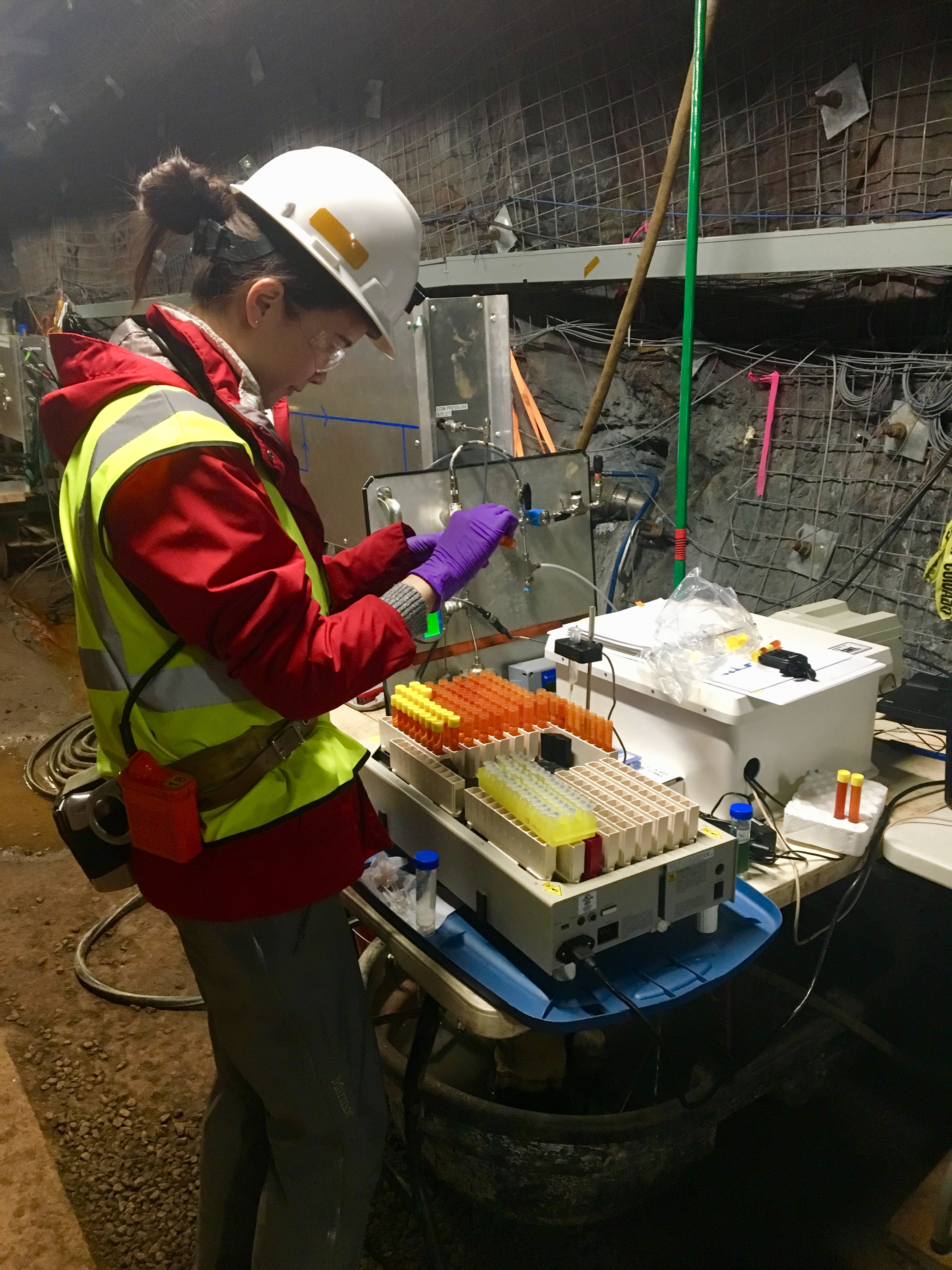Researchers ask microorganisms for directions through the subterranean networks they colonize
 |
| GRC member Yuran Zhang, a doctoral student at Stanford University and member of EGS Collab, works at the testbed at the 4850 Level of Sanford Lab. Photo courtesy Yuran Zhang. |
At a testbed on the 4850 Level of Sanford Underground Research Facility (Sanford Lab), researchers walk drifts adjacent to these pathways. Just inches from dribbling underground streams, researchers with Enhanced Geothermal Systems Collab (EGS Collab) are trying to find better ways to extract heat from the earth’s hot rocks for the Department of Energy’s FORGE project (Frontier Observatory for Research in Geothermal Energy). If the project is successful in extracting natural heat, it could one day act as an enormous, domestic, clean energy resource.
Traditionally, researchers use environmentally friendly chemical tracers to follow water traveling through the earth. By injecting a trackable chemical into the reservoir then taking samples at outlet locations downstream, researchers can get a sense of where and how quickly the water is flowing.
Due to the inflexibility of chemical tracers, researchers have begun developing tracers tagged with synthetic DNA. Unlike chemical tracers, DNA tracers have inexhaustible configurations, allowing them to be used for more complex reservoirs. Still, these injected tracers are only useful once researchers have established flow circulations between wells.
Read More.........